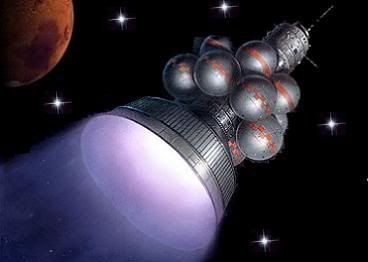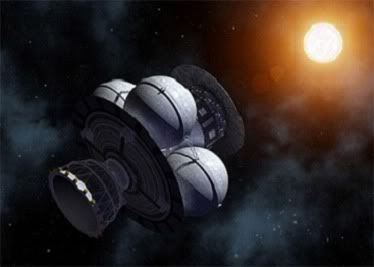Post by glactus on Aug 2, 2011 0:37:10 GMT

The Daedalus spacecraft
Project Daedalus was a study conducted between 1973 and 1978 by the British Interplanetary Society to design a plausible interstellar unmanned spacecraft Intended mainly as a scientific probe, the design criteria specified that the spacecraft had to use current or near-future technology and had to be able to reach its destination within a human lifetime. Alan Bond led a team of scientists and engineers who proposed using a fusion rocket to reach Barnard's Star, only 5.9 light years away.

Daedalus to the stars
The trip was estimated to take 50 years, but the design was required to be flexible enough that it could be sent to any of a number of other target stars. The result was a two stage, nuclear fusion powered vehicle, unmanned and under autonomous operation due to the distances involved, accelerated to 16% of the speed of light, and armed with a variety of probes, sensors, robotic wardens and intelligent decision making computers. Although the journey could take as long as 40 years, a flyby at such speeds would be over in 70 hours.

Daedalus in the deep
Although the study was conducted during the 70's, it's still referred to today, even in NASA, as a baseline study. Any future mission to the stars probably won't look anything like Daedalus, but it gives a good idea of the complexity and scale of task, and the length of time it would take to get to even the closest stars.
No estimate of the cost of such an enterprise could be made, but it would be way beyond the capacity of an individual nation, and would probably need a period of world stability unlike any we have seen to date.
.
Looking at Daedalus
Credits: These are British interPlatetary Society images
Text by Wikepedia
Telescope in avatar: Meade 16" LX 200 with equatorial pier
Astromomer in avatar: Glactus


